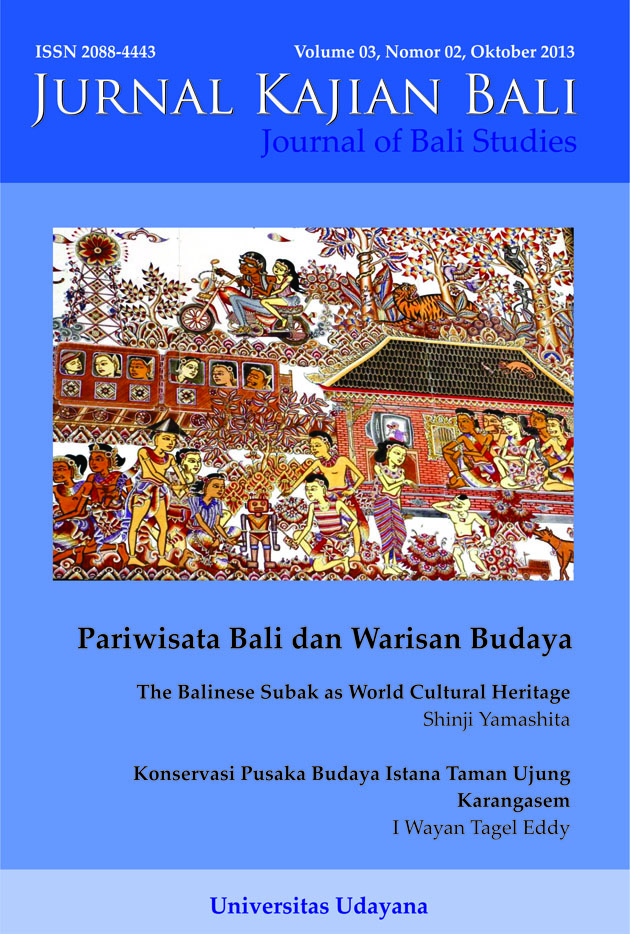Pariwisata sebagai Wahana Pelestarian Subak, dan Budaya Subak Sebagai Modal Dasar dalam Pariwisata
Abstract
Abstract
Taking a mutualistic perspective, this article discussesthe role of tourism as a vehicle for the preservation of thesubak, and, conversely, the cultural aspects of the subakas a capital base for tourism. Tourism is a cornerstonein the development of Bali, and, due to several positivecharacteristics, such as its resilience in the face of crises, thebenefits from tourism reach all levels of society. For Bali,the data indicate that 34% of the labor force is employedin this sector, and approximately 52% of Balinese people’sincome has connection to tourism. Its role in generatingthe GDP and PAD (Pendapatan Asli Daerah, or localrevenue) is also very large, which allows the regionaland city governments to implement various developmentinitiatives. The basic capital of Bali’s tourism developmentis culture, especially culture based on agriculture. Because‘rice culture’ is so central to many aspects of Balineseculture, then indeed the basic capital of Balinese tourism isrice culture or subak culture. This article argues that trulytourism has great potential as a vehicle for the preservationof the subak, because tourism could become the market thatsupports agricultural products. There is also the potentialfor developing various types of agriculture-based tourism,such as ecotourism and agro-tourism. Thus, the approachto considering the relationship between agriculture (subak)and tourism should be mutualistic, not dichotomous.
Downloads
Keywords

This work is licensed under a Creative Commons Attribution 4.0 International License.

















